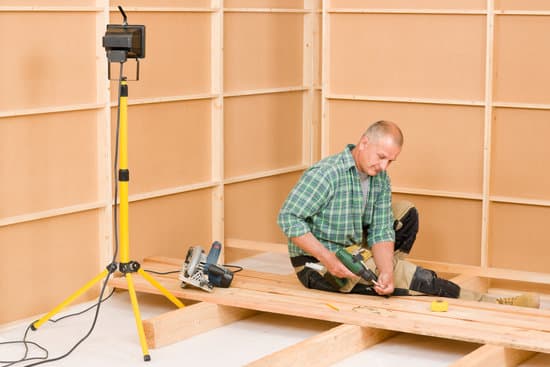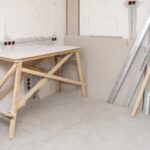Having a high-performance home projector is essential for anyone looking to create an immersive viewing experience in their own space. The quality of the projector directly impacts image clarity, color accuracy, and overall enjoyment of movies, TV shows, sports events, and gaming sessions. On the other hand, a low-performing projector can lead to disappointment with blurry visuals, washed-out colors, and lackluster image quality.
To truly enhance your home theater setup and ensure a cinematic experience, it’s crucial to understand how to improve home projector performance. In this article, we will explore various factors that contribute to optimal projection performance and provide actionable tips on selecting the right projector, optimizing projection space, fine-tuning image settings, choosing the right projection screen, optimizing audio quality, maintaining the projector in prime condition, and implementing advanced techniques for improved performance.
By following these guidelines and making the necessary adjustments to your home theater setup, you’ll be able to achieve the ultimate viewing experience right in the comfort of your own home. So let’s dive into understanding everything you need to know about improving home projector performance and transforming your entertainment space into a captivating cinematic oasis.
Understanding the Basics
Choosing the right home projector is essential for achieving optimal performance and a satisfying viewing experience. With different types of projectors available on the market, understanding their performance capabilities is crucial in making an informed decision.
When purchasing a home projector, there are several factors to consider. One important factor is the type of projector technology, which can include LCD (liquid crystal display), DLP (digital light processing), and LED (light-emitting diode). Each type has its own advantages and limitations in terms of image quality, color accuracy, contrast ratio, and brightness. Understanding these differences can help you choose the projector that best suits your needs and preferences.
Another factor to consider is the resolution of the projector. The resolution determines the number of pixels displayed on screen and impacts image clarity. Common resolutions for home projectors include 720p (1280×720 pixels), 1080p (1920×1080 pixels), and 4K (3840×2160 pixels). Choosing a higher resolution projector will result in sharper images with finer details.
In addition to technology and resolution, other factors such as throw distance, aspect ratio compatibility, connectivity options, and noise level should also be taken into account when selecting a home projector.
| Factor | Description |
|---|---|
| Type of Projector Technology | Different types include LCD, DLP, and LED with varying performance capabilities. |
| Resolution | Determines image clarity. Common resolutions are 720p, 1080p, and 4K. |
| Throw Distance | The distance between the projector and screen affects image size and focus. |
| Aspect Ratio Compatibility | The projector’s ability to display different aspect ratios, such as 16:9 or 4:3. |
| Connectivity Options | The availability of ports to connect various devices, such as HDMI, USB, or VGA. |
| Noise Level | The amount of noise produced by the projector during operation. |
Optimizing Projection Space
The environment in which a home projector is set up plays a crucial role in its performance. By optimizing the projection space, viewers can enjoy a better and more immersive viewing experience. This section will explore the importance of ambient lighting, projector and screen positioning, and strategies for dealing with potential external interferences.
One of the key factors to consider when optimizing projection space is ambient lighting. The amount and type of ambient light in the room can greatly impact the quality of projections. Too much ambient light can wash out the image and reduce contrast, while too little light can make the image appear dull. It is important to strike a balance by dimming or blocking out excessive light sources to create an ideal viewing environment.
In addition to ambient lighting, proper positioning of the projector and screen is essential for optimum viewing angles. The projector should be placed at a distance that allows for both optimal image size and sharpness. The screen should be positioned at eye level or slightly above to ensure a comfortable viewing experience without straining the neck or eyes.
Dealing with potential external interferences is also important in optimizing projection space. If there are noise disturbances from outside the room or within the house, applying soundproofing strategies such as insulation, weather stripping doors, or using acoustic panels can minimize disruptions and enhance audiovisual enjoyment. Additionally, selecting a dedicated space for home theater setup away from high-traffic areas or rooms with excessive natural light can further improve the overall viewing experience.
| Aspect | Data |
|---|---|
| Ambient Lighting | Dim or block excessive light sources to create an ideal viewing environment |
| Projector Positioning | Place projector at an optimal distance for image size and sharpness |
| Screen Positioning | Position screen at eye level or slightly above for comfortable viewing experience |
| Dealing with External Interferences | Apply soundproofing strategies and select a dedicated space to minimize disruptions |
Calibration and Image Settings
When it comes to home projector performance, calibration and image settings play a crucial role in achieving the best possible viewing experience. Even the highest-quality projectors can benefit from fine-tuning to optimize image quality and overall performance. In this section, we will explore the steps you can take to ensure your projector is set up correctly and calibrated for maximum performance.
Utilizing built-in calibration tools
Most modern home projectors come equipped with built-in calibration tools that allow users to adjust various image settings. These settings include brightness, contrast, color temperature, and sharpness. Taking the time to navigate through these menus and make precise adjustments can significantly improve the overall picture quality.
One of the key settings to pay attention to is contrast. Setting the contrast too high can result in a loss of detail in bright areas of the image, while setting it too low can make dark scenes appear muddy. Finding the right balance is essential for achieving optimal image quality.
Another important setting is color temperature. This setting determines how warm or cool the colors appear on screen. Most projectors offer preset options such as “cool,” “warm,” or “cinema.” Experimenting with these presets and adjusting accordingly based on personal preference can greatly enhance color accuracy and realism.
Understanding aspect ratios and resolution settings
Aspect ratio refers to the proportional relationship between an image’s width and height. It is essential to understand how aspect ratios work when using a home projector. Common aspect ratios include 16:9 (widescreen) and 4:3 (standard). It is crucial to set both your projector and content source (such as a Blu-ray player or streaming device) to match the desired aspect ratio for proper scaling and optimal viewing experience.
Resolution settings also play a significant role in image quality. Choosing the correct resolution ensures that your projector is displaying the content in its intended clarity. In general, higher resolution settings offer sharper and more detailed images. However, it is essential to note that the projector’s native resolution determines the maximum achievable resolution. Set your projector and content sources to match the native resolution for the best results.
By taking advantage of these calibration tools and understanding aspect ratios and resolution settings, you can fine-tune your home projector for maximum performance and enjoy a truly immersive viewing experience. Remember to frequently check and adjust these settings as needed to maintain optimal image quality over time.
Choosing the Right Projection Screen
Choosing the right projection screen is a crucial step in improving home projector performance. The projection screen plays a significant role in determining the quality of the projected image and overall viewing experience. Here are some factors to consider when selecting the right projection screen for your home theater setup:
- Types of Projection Screens: There are various types of projection screens available, each with its own unique characteristics and impact on performance. Some common types include fixed frame screens, retractable screens, motorized screens, and portable screens. It is essential to understand the pros and cons of each type to make an informed decision.
- Screen Size and Aspect Ratio: The size and aspect ratio of the projection screen should be determined by the dimensions of your room and seating arrangement. A larger screen size can provide a more immersive viewing experience but may not be practical in smaller spaces. Additionally, choosing the appropriate aspect ratio (e.g., 16:9 or 4:3) ensures that the projected image is properly proportioned.
- Screen Material: The selection of screen material can significantly impact image quality, brightness, color reproduction, and viewing angles. Common screen materials include vinyl, fiberglass, and fabric coated with reflective coatings or micro-perforations for enhanced performance. Factors to consider when selecting a screen material include gain (the amount of light reflected back to viewers), texture (smooth or acoustically transparent), and viewing angle capabilities.
It is worth noting that there is no one-size-fits-all solution when it comes to choosing a projection screen. Different environments and personal preferences may require different choices in terms of type, size, aspect ratio, and material. Therefore, it is essential to research extensively and even consult with professionals to ensure you make an informed decision for optimal home projector performance.
Optimizing Audio Quality
When it comes to creating a truly immersive home theater experience, audio quality is just as important as the visual performance of your projector. To ensure that you have balanced audiovisual performance, it is crucial to pair your home projector with the right sound system. Here are some recommendations for selecting speakers, a receiver, and other audio equipment to enhance your viewing experience.
Selecting Speakers
Choose speakers that can reproduce high-quality sound across different frequencies. Consider a 5.1 or 7.1 surround sound system for an enveloping audio experience. Front left, front right, and center channel speakers handle most of the dialogue and sound effects, while rear speakers provide ambient sounds and surround effects. For deep bass effects, consider adding a subwoofer to your setup.
Choosing a Receiver
A receiver acts as the central hub of your audio system. Look for one that has enough power to drive your speakers without distortion and supports the latest audio formats such as Dolby Atmos or DTS:X for an immersive sound experience. Consider options with multiple HDMI inputs for connecting various devices like Blu-ray players and gaming consoles.
Additional Audio Equipment
Depending on your preferences and budget, you may consider adding additional equipment such as an amplifier to boost signal strength or a dedicated media player for high-resolution audio playback.
In addition to selecting the right equipment, it is essential to optimize the acoustics of your room by minimizing audio distortions and external noises.
Soundproofing the Room
Apply soundproofing strategies like using acoustic panels or foam to absorb unwanted echoes or reverberations in your space. This helps create an optimal listening environment by reducing interference from outside sounds or reflections within the room.
Speaker Placement
Position your speakers correctly for optimal audio performance. Follow the manufacturer’s guidelines for speaker placement, considering factors such as distance from the listening area, height, and angle of installation. Experiment with different placements to find the best soundstage.
By paying attention to audio quality and optimizing your home theater’s audio system, you can elevate your viewing experience to new heights. The combination of immersive visuals from your projector and high-quality audio will transport you into a world of cinematic entertainment right in the comfort of your own home.
Cleaning and Maintenance
Introduction:
Maintaining the cleanliness and functionality of your home projector is crucial for ensuring optimal performance and longevity. Regular cleaning and maintenance not only enhance image quality but also prevent potential issues that can arise from dust or dirt accumulation. In this section, we will guide you through the necessary steps to keep your projector in prime condition.
Regular Cleaning Routine:
To maintain optimal image quality, it is important to regularly clean the lens and other critical components of your projector. Start by turning off the projector and letting it cool down before proceeding with any cleaning tasks. Use a soft, lint-free cloth or a lens cleaning brush to gently remove any dust or debris from the lens surface. Avoid using abrasive materials that may scratch or damage the lens.
Cleaning the Air Filter:
The air filter plays a crucial role in preventing dust particles from entering the internal components of your projector. Over time, these filters can become clogged with dirt and debris, reducing airflow and causing overheating. It is recommended to clean or replace the air filter every 3-6 months depending on usage. Consult your projector’s user manual for specific instructions on accessing and cleaning or replacing the air filter.
Tips for Preventing Dust Accumulation:
In addition to regular cleaning, there are several preventive measures you can take to minimize dust accumulation in your projector. Firstly, avoid placing the projector in dusty environments or near sources of airborne particles such as vents or windows. You can also use a dust cover when your projector is not in use to protect it from potential dust buildup. Lastly, consider investing in an air purifier or dehumidifier to improve air quality in your viewing space.
Troubleshooting Common Issues:
Even with regular maintenance, projectors may encounter common issues such as image flickering, color distortion, or fan noise. Understanding how to troubleshoot these problems can help you identify and resolve them quickly. Consult your projector’s user manual for troubleshooting tips specific to your model. If the issue persists, reach out to the manufacturer’s customer support for further assistance.
By following these cleaning and maintenance guidelines, you can ensure that your home projector stays in prime condition, delivering optimal performance and an immersive viewing experience for years to come. Remember to establish a regular cleaning routine and take the necessary preventive measures to minimize dust accumulation. With proper care, your projector will continue to provide you with a top-quality home theater experience.
Advanced Techniques for Improved Performance
While standard home projector setups can deliver excellent image quality and immersive viewing experiences, there are advanced techniques that can elevate performance even further. These techniques push the boundaries of what is possible with a home projector and allow users to create truly exceptional home theater setups. In this section, we will explore some of these advanced techniques that can take your home projector performance to the next level.
One advanced technique is 3D projection. By using specialized 3D glasses and content, you can bring movies, games, and other media to life in three dimensions. This creates a more immersive experience where viewers feel like they are part of the action. To take advantage of this feature, make sure your projector supports 3D output and use compatible 3D content and glasses.
Another technique gaining popularity is ultra-short throw projection. Unlike traditional projectors that need to be positioned further away from the screen or wall, ultra-short throw projectors can be placed just inches away. This allows for larger image sizes in smaller spaces while reducing the risk of shadows or obstructions. Ultra-short throw projectors are particularly useful in rooms where space is limited.
Reducing input lag is another important consideration for those who plan on gaming or watching fast-paced action scenes with their home projectors. Input lag refers to the delay between when a command is inputted (such as pressing a button on a controller) and when it is displayed on the screen.
High input lag can be frustrating and negatively impact gameplay or movie enjoyment. To minimize input lag, look for projectors with lower response times (ideally below 30 milliseconds) and consider connecting your game console or media player directly to the projector using HDMI cables.
In addition to these advanced techniques, there are also specific accessories designed to enhance projector performance. Mounts allow for more flexible positioning options and can help achieve optimal angles and distances for projection. Filters can protect the internal components of the projector from dust and prolong its lifespan. Always check with the manufacturer for recommended accessories that are compatible with your specific projector model.
By implementing these advanced techniques and utilizing the right accessories, you can further improve the performance of your home projector setup. Whether it’s experiencing movies in stunning 3D, creating a large image in a small space with an ultra-short throw projector, or reducing input lag for gaming, these advanced techniques allow you to truly optimize your home theater experience.
Conclusion
In conclusion, achieving the ultimate home theater experience requires careful consideration of various factors that contribute to home projector performance. From understanding the basics and selecting the right projector to optimizing projection space, calibrating image settings, and choosing the right projection screen, each aspect plays a critical role in enhancing image quality and overall enjoyment. Additionally, pairing the projector with the right audio system, maintaining regular cleaning and maintenance routines, and exploring advanced techniques can further elevate the viewing experience.
By investing time and effort into choosing the right home projector based on individual needs and preferences, viewers can ensure optimal image quality and performance. Understanding the different types of projectors available (LCD, DLP, LED) allows for informed decision-making. Furthermore, considering factors such as ambient lighting, positioning the projector and screen correctly for optimal viewing angles, and minimizing external interferences through soundproofing strategies contribute to an enjoyable experience.
Once a home projector is in place, fine-tuning image settings through built-in calibration tools is essential for maximizing performance. Adjusting brightness, contrast, color temperature, sharpness, aspect ratios, resolution settings are key steps towards achieving a crisp and proportional display. Additionally, selecting an appropriate projection screen size and material type further enhances projected images.
To complete a truly immersive viewing experience in a home theater setup with a high-performance home projector system includes optimizing audio quality. Balancing audiovisual performance by selecting suitable speakers and additional audio equipment ensures that sound quality matches visual excellence. Proper maintenance of projectors through regular cleaning routines helps maintain optimal performance over time.
In summary, improving home projector performance is crucial for achieving the ultimate home theater experience. By implementing the tips provided in this article on choosing the right projector type for individual needs; optimizing projection space; calibrating image settings; selecting an appropriate projection screen size and material; enhancing audio quality; maintaining regular cleaning routines; exploring advanced techniques; viewers can create a truly immersive environment in their own homes.
With careful attention to detail and a commitment to optimal performance, viewers can enjoy an enhanced viewing experience that rivals that of a commercial theater. So take the time and effort to implement these tips and prepare yourself for the ultimate home theater experience.
Frequently Asked Questions
How do I optimize my projector?
To optimize your projector, there are several important factors to consider. First, ensure that the projector is positioned correctly for the desired screen size and distance. This typically involves adjusting the zoom and focus settings accordingly. Additionally, make sure that the projector is in a well-ventilated area to prevent overheating.
It is also crucial to adjust the brightness and contrast settings to match the lighting conditions of the room where the projector is being used. Experiment with different settings to find the optimal balance between brightness and image quality. Lastly, regularly clean the projector lens and air filters to maintain image clarity and prevent dust buildup.
Why is my projector so hard to see?
If your projector is hard to see, there are a few potential reasons for this issue. Firstly, check if there are any ambient light sources in the room that may be causing glare or washing out the projected image. Close curtains or blinds, dim lights, or use blackout screens or curtains if necessary.
Adjusting the brightness and contrast settings on your projector can also help improve visibility in challenging lighting conditions. Another factor to consider is the screen gain, which refers to how effectively a projection screen reflects light back towards viewers. Investing in a high-gain screen can significantly enhance image visibility in environments with a lot of ambient light.
Is it OK to run the projector all day?
Running a projector all day can be done, but it is essential to consider certain factors before doing so. Many modern projectors are designed for extended usage periods; however, it’s essential to refer to your specific model’s user manual for guidelines regarding continuous operation times and recommended cooling breaks. Overheating can be a concern when running a projector for extended periods, so ensuring proper ventilation and avoiding placing objects that block airflow around the unit is crucial.
It’s also advisable not to leave a static image on-screen consistently as this can cause burn-in on certain types of projectors over time. Regularly inspecting the lamp life and performing maintenance routines as outlined by the manufacturer will help ensure the projector’s longevity and reliable operation even with extended usage.

I’m thrilled to have you here as a part of the Remodeling Top community. This is where my journey as an architect and remodeling enthusiast intersects with your passion for transforming houses into dream homes.





